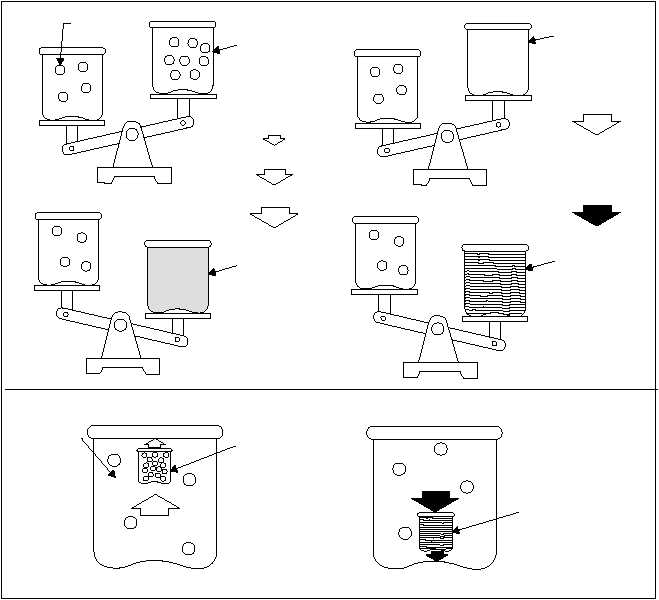Atmospheric
resistance
to
vertical
motion
(stability), depends upon the vertical distribution of the
air’s weight at a particular time. The weight varies with
air temperature and moisture content. As shown in
figure 2-7, in comparing two parcels of air, hotter air is
lighter than colder air; and moist air is lighter than dry
air. If air is relatively warmer or more moist than its
surroundings, it is forced to rise and is unstable. If the
air is colder or dryer than its surroundings, it sinks until
it reaches its equilibrium level and is stable. The
atmosphere can only be at equilibrium when light air is
above heavier air—just as oil poured into water rises to
the top to obtain equilibrium. The stability of air
depends a great deal on temperature distribution and to
a lesser extent on moisture distribution.
Since the temperature of air is an indication of its
density, a comparison of temperatures from one level to
another can indicate how stable or unstable a layer of
air might be—that is, how much it tends to resist
vertical motion.
Lapse Rates
In chapter 1, it was shown that temperature usually
decreases with altitude and that the rate at which it
decreases is called the lapse rate. The lapse rate,
commonly expressed in degrees Fahrenheit per 1,000
feet, gives a direct measurement of the atmospheres s
resistance to vertical motion. The degree of stability of
the atmosphere may vary from layer to layer as
2-14
STANDARD
AIR
MOIST AIR IS
LIGHTER THAN
STANDARD AIR.
HOT AIR IS
LIGHTER THAN
STANDARD AIR.
- ON LOOSING ITS
MOISTURE IT THEN
BECOMES...
DRY AIR IS
HEAVIER THAN
STANDARD AIR.
COLD AIR IS
HEAVIER THAN
STANDARD AIR.
- IF COOLED, IT
THEN BECOMES...
STANDARD
AIR
RELATIVE
OR
T
AIR WILL RISE.
(UNSTABLE)
HOT
MOIS
RELATIVE
OR
AIR WILL SINK.
(STABLE)
COLD
DRY
B
A
AG5f0207
Figure 2-7.—Moisture content and temperature determines weight of air.


